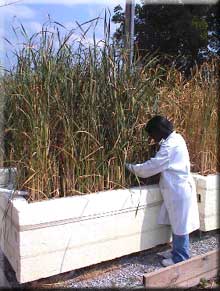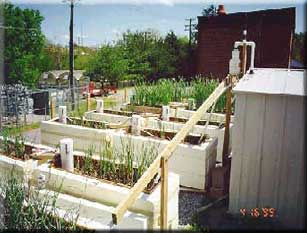The less-expensive free water surface systems have significant mosquito production potential; a serious drawback, especially because of increasing concerns about emerging (and reemerging) mosquito-borne diseases.
Hydraulic control of mosquito production has been proposed in the literature, but no definitive studies demonstrating the efficacy of this approach have been reported. To address this issue, eight free water surface constructed wetland mesocosms (0.7 m2 each) were operated on a one-week drain-fill cycle.
Simultaneously, four equally-sized subsurface flow mesocosms were operated continuously to allow a comparison of nitrogen, phosphorous, and organic matter (as chemical oxygen demand) removal between the two types of systems. Mosquito populations - larvae, pupae, and emerged adults - were monitored in the free water surface cells; results demonstrated that periodic draining prevents mosquito emergence in all but high-rainfall conditions.

During high-rainfall periods, supplemental drainage or chemical controls might be applied to prevent mosquito emergence, and thereby avoid associated nuisance or health problems. Pollutant removal rates, expressed as mass removal rate per unit area, were similar in the free water surface cells and in the subsurface flow cells, but the lower cost of free water surface systems would appear to favor the periodically-drained free water surface systems.
